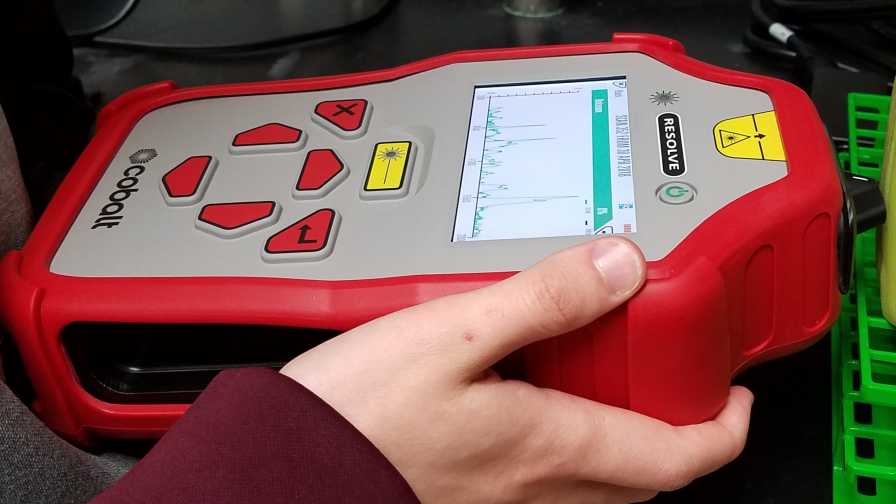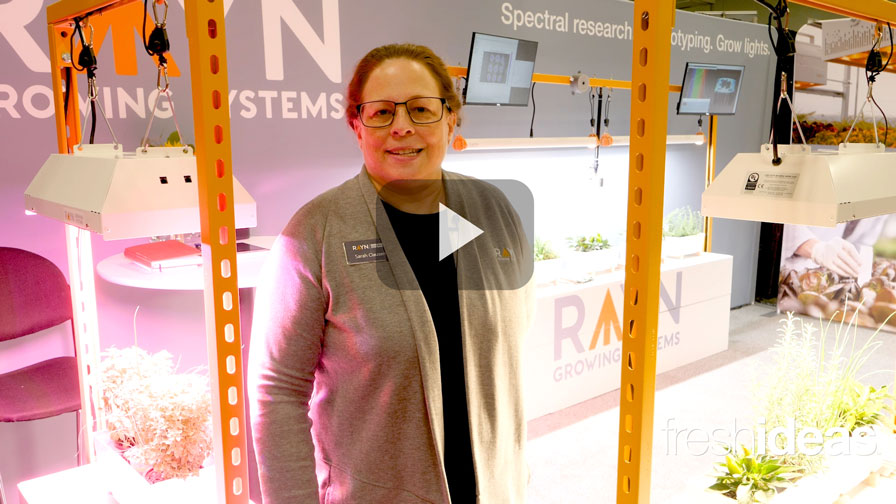Mission Possible to Get the Jump on Rose Rosette

Can this portable spectrometer help put rose rosette disease on the spot? Scientists are plugged in.
Photo courtesy of D. Kurouski
The first step to effectively controlling any plant disease is proper identification. Otherwise, control measures could render ineffective, leading to further plant loss as well as wasted time and resources. This is especially true of rose rosette disease (RRD).
Typical symptoms of RRD include rapid elongation of new shoots, witches’ brooms, small or distorted leaves, red pigmentation of stems or foliage, and excessive thorn development. However, none of these symptoms is guaranteed to be expressed when the disease is present, especially early in the disease cycle.
Nebulous expression of symptoms have spurred researchers to take action. Scientists have been working since 2014 on various aspects of RRD through a multi-year, multimillion-dollar grant titled “Combatting Rose Rosette Disease” funded by USDA-National Institute of Food and Agriculture.
A small team of researchers from Texas A&M, led by Dr. Dmitry Kurouski, developed a new diagnostic tool for RRD detection. Using a hand-held, portable spectrometer, Kurouski’s team has correctly identified the virus in leaves both non-invasively and non-destructively, with an almost instant read.
Raman spectroscopy works by relying on light to interact with molecular vibrations in a leaf. A fingerprint is made based on these vibrations, meaning that the virus that causes RRD is identified by its unique fingerprint. Previously, the team proved this technology could identify fungal diseases on corn, wheat, and sorghum and eventually adapted it to successfully compare healthy and asymptomatic rose leaves, as well as symptomatic and asymptomatic leaves. They could even differentiate rose leaves with different degrees of infection.
While not yet ready for widespread adoption and use in the industry, this tool can help diagnostic labs by acting as an initial screen for RRD that can help save on more costly, molecular techniques.
The American Rose Society provided small research grants for a portion of this work.
AmericanHort and its Horticultural Research Institute affiliate, in conjunction with like-minded organizations such as the Society of American Florists, previously supported funding of rose rosette research at the University of Arkansas through the Farm Bill Section 10007.








